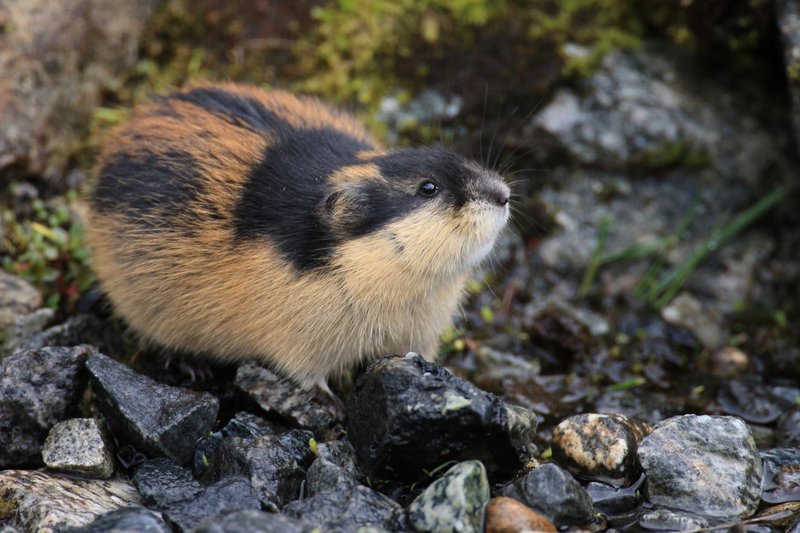
Let’s think about this scenario like you’ve just walked into a café and ordered a new drink. You want to know how to enjoy it without getting burned or making a mess. Similarly, when you encounter a lemming, there are do’s and don’ts that can help you appreciate this moment without causing stress to the little guy or yourself. Let’s dive in.
Understanding Lemmings: Who Are They?
Lemmings are small, stocky rodents that usually measure about 5 to 6 inches long. They have short legs, rounded bodies, and thick fur that varies from browns to grays. These critters are most famous for their mysterious mass migrations—sometimes, they seem to just run off cliffs or into water, creating myths around their behavior. Honestly, much of what we believe about them is exaggerated. They don’t actually “commit mass suicide” as the stories suggest. Instead, these migrations are a natural response to population pressures, food availability, and environmental changes.
You might be wondering where you’ll typically find these little guys. Lemmings inhabit the tundra regions of North America, Europe, and Asia. So, if you’re in these areas, knowing what to look for can help you spot them more easily. They’re most active during the summer months when they’re foraging for plant materials like grasses, mosses, and even the occasional insect. This is when you’re most likely to see them darting around.
What to Do When You Spot a Lemming
So, what should you do if you come across a lemming? First and foremost, stay calm. It’s easy to get excited or startled, but remember that these animals are more scared of you than you are of them. Look and observe from a distance. You don’t want to scare them off or disrupt their natural behavior. Like any good wildlife encounter, appreciation is key!
Try to take a moment to enjoy the experience. Grab your binoculars if you have them and watch how they interact with their environment. Are they busily digging? Searching for food? Engaging in social behaviors with other lemmings? Each observation can teach you something new about their habits and ecology. Just be mindful to keep your distance, as rushing too close can cause unnecessary stress for these little creatures.
Do Not Approach or Touch
This might sound like a no-brainer, but it’s essential to avoid touching or trying to handle a lemming. They’re not pets; they’re wild animals with their own instincts and behaviors. Approaching them can cause them to feel threatened, leading to stress or even injuries. Plus, they can bite if they feel cornered! Imagine being hunted down by a giant; you’d probably try to defend yourself too.
If you’re out there in the wild, it’s best to enjoy them just as they are. If you have children with you, encourage them to observe quietly from a distance and teach them why it’s important to respect wildlife. It’s a great opportunity to learn about nature’s delicate balance.
Respect Their Habitat
When you encounter a lemming, you’re also coming into their home. This part is crucial—respect their habitat. Avoid trampling vegetation and be mindful of the ground you’re walking on. If you’re hiking or exploring, stick to existing trails whenever possible. This helps preserve their environment and ensures that these fascinating creatures can thrive in the wild.
Consider taking pictures from afar instead of getting too close. It’s a great way to capture your experience without disrupting their natural habitat. Plus, you’ll have a lovely memory to take home with you. Just remember, don’t be that person who tries to lure them in for a closer shot with food or anything else. That’s not only bad for the lemmings but for the entire ecosystem too.
Signs of Distress
While lemmings are generally pretty resilient, they can show signs of distress. If a lemming looks puffed up, freezing, or trying to escape, it’s feeling threatened. Always observe their body language. If they’re darting away or hiding, give them space. Here’s the thing: by recognizing these signs, you can make sure your visit is a positive experience for everyone involved.
If they seem calm and continue to forage, just watch quietly. You might be lucky enough to witness some interesting behaviors, such as grooming or nest-building activities. It can feel like you’re a part of their little world, and there’s nothing quite like that moment of connection with nature.
Photography Tips
If you’re keen on snapping some pictures of your encounter, here are a few tips to do it without disturbing the lemmings. First, use a zoom lens. This allows you to capture close-up details without getting too close. A good rule of thumb is to maintain a distance of at least 15 feet. Not only does this protect the lemmings, but it also helps you get natural shots without any forced behaviors.
Another tip is to shoot during the early morning or late afternoon when the light is soft and golden. These are prime times for wildlife photography. You’ll find that the lemmings are usually more active during these hours too. Patience is key! Wait quietly for the right moment, and you might end up with some fantastic shots.
Why It Matters
You might be wondering why encountering a lemming is significant. Each animal plays a role in its ecosystem. Lemmings serve as prey for various predators, including foxes and birds of prey. By understanding and respecting these small creatures, you contribute to the balance of nature. Every time someone interacts responsibly with wildlife, it fosters a culture of conservation. It’s like putting a coin in the nature bank—you’re helping to preserve these moments for future generations.
Additionally, encounters like this can spark a love for wildlife and the environment. Who knows? That brief moment with a lemming could inspire someone to advocate for wildlife conservation or embark on a career in ecology. Every small action counts.
Closing Thoughts
In summary, encountering a lemming in the wild can be a delightful experience if approached with the right mindset. Respect their space, observe from a distance, and cherish the moment. Nature has a way of connecting us, reminding us that we’re part of something larger. The next time you find yourself on a nature trail or in the Arctic tundra, keep your eyes peeled. You never know when you might spot your very own lemming moment!

